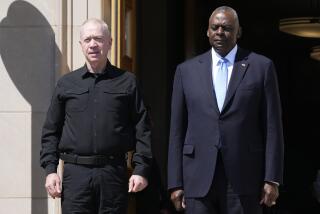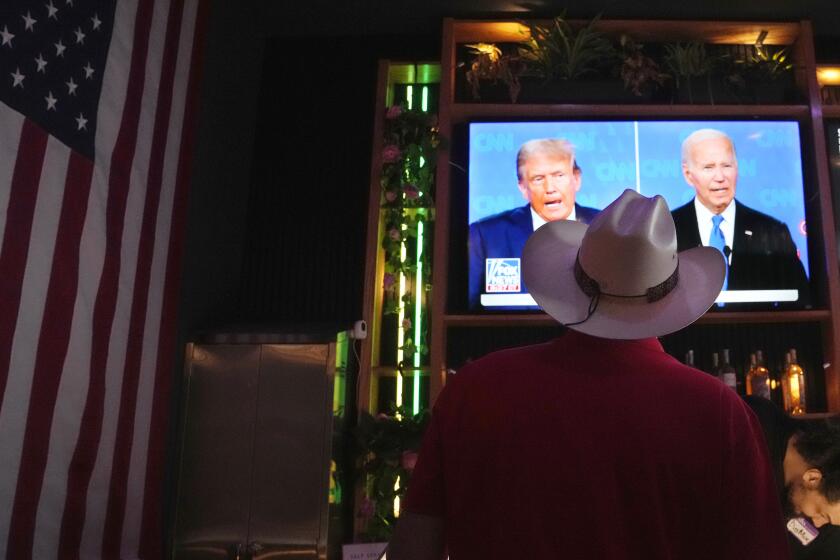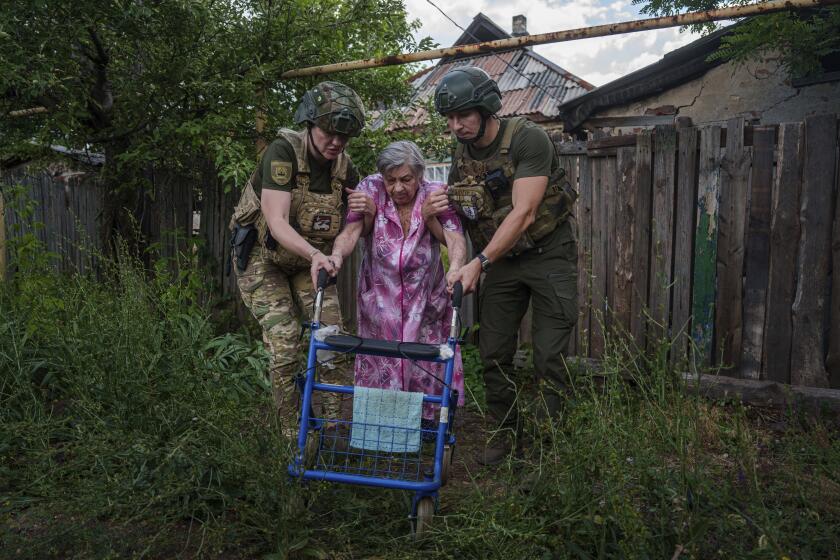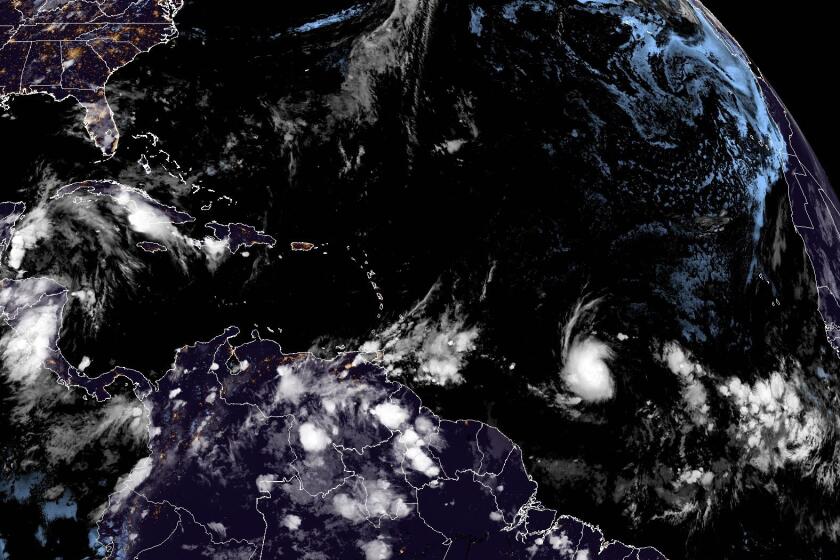Iran, Iraq Still Fail to Bridge Waterway Dispute
Along its 115-mile length, the Shatt al Arab waterway seems like a dead river.
On its swift passage to the Persian Gulf, with Iran to the east and Iraq to its west, the confluence of the mighty Tigris and Euphrates rivers is the color of mud, the result of not having been dredged for eight years.
As it heads for the sea, it passes wrecked cities--Khorramshahr and Abadan in Iran and Al Faw in Iraq--which have been laid waste by the conflict between Tehran and Baghdad. Near the Iraqi port of Basra, dozens of cargo ships lie entombed at anchor, where they have remained trapped since the war erupted in September, 1980.
Now that the war between Iran and Iraq is due to end officially Saturday, the river itself threatens to return to center stage as one of the main issues dividing the warring countries. So bitter is the dispute that the two sides rarely agree even on what to call the waterway. To the Iraqis, it is the Shatt al Arab, or River of Arabs; in Persian, it is the Arvand Rud.
Ancient Dispute
The dispute over the Shatt al Arab is ancient and as complex as something called the thalweg line, the technical term for the middle of the chief navigable channel of a waterway that also constitutes the boundary between states.
In 1975, Iran and Iraq agreed during a conference in Algiers of the Organization of Petroleum Exporting Countries to settle longstanding differences. Iran agreed to end its assistance to Kurdish rebels in northeastern Iraq, and the Iraqis in turn granted Iran territorial control over the Shatt al Arab up to the middle of the river.
In September, 1980, when the war erupted, Iraqi President Saddam Hussein flamboyantly tore up the Algiers agreement, and the dispute has remained bogged down in warfare, a legacy of colonial rule and imperial map-making.
Since the end of the fighting last month, both sides have indicated that a halt in the warfare has not changed their positions on the Shatt al Arab.
“Immediately after the cease-fire,” Hussein said in a nationwide broadcast Aug. 6, “we will benefit from the Shatt al Arab in accordance with our inalienable rights. . . .”
Similarly, Iranian Foreign Minister Ali Akbar Velayati said that during upcoming peace talks with Iraq, scheduled to begin in Geneva next Thursday, Iran will not compromise on the 1975 boundary agreement. He said Iraq has no claim to full sovereignty over the Shatt al Arab.
In a commentary Aug. 9, the English-language Tehran Times remarked: “All negotiations now intended to be held under the aegis of the U.N. secretary general will undoubtedly have to take the Algiers accord as a reference point. There is no question as to Iran’s legitimate rights to use of the Shatt al Arab on its side of the dividing line agreed to in this agreement.”
Before the 1975 agreement, the Iran-Iraq border ran along the low-water mark on the Iranian, or eastern, side of the river. Iran complained that this did not give its ships sufficient room to maneuver from Iranian cities along the Shatt al Arab to the mouth of the Persian Gulf.
Disputes Date Back to 1639
Border disputes in the area date back centuries to a 1639 treaty between Persia and the Ottoman Empire, which then ruled the area now called Iraq, and a subsequent pact called the Treaty of Erzurum, signed in 1847.
In modern times, a commission of British, Russian, Ottoman and Persian officials drew up what was known as the Constantinople Protocol in 1913, giving Iran control of the east bank--and also the city of Abadan, which is on an island.
Tensions grew between the two countries in the 1920s, and in 1937 Iran and Iraq agreed under British auspices to a frontier treaty that set a new boundary--the eastern bank of the river--except for the last four miles, where it would be in the center of the river.
In later years, Iran claimed that it had submitted to the treaty under “British imperialist pressures” and that the agreement violated common international practice.
In April, 1969, Iraq issued an ultimatum that Iranian ships lower their flags on the river, remove naval personnel and recognize Iraqi sovereignty. Iran responded by sending gunboats up the Shatt.
The dispute simmered, with frequent border clashes, until Hussein and Shah Mohammed Reza Pahlavi of Iran met in a villa in Algiers in 1975 and signed the new treaty.
Iraq has been particularly sensitive because it has less than 10 miles of coastline on the Persian Gulf, compared to the hundreds of miles enjoyed by Iran. Thus, the Shatt al Arab is Iraq’s only direct outlet to the sea. Since the war began, the country’s oil exports have flowed overland by pipeline, and cargo imports have come through neighboring Kuwait.
Filled With Mines
Iraq has appealed to the United Nations to set up a commission to help clear the Shatt for commercial use. Not only has the river silted up--one Western estimate in 1986 suggested that it would require six months to clear--but it also has become the repository of thousands of tons of mines and other explosives used to keep the two country’s armies apart.
In addition, both countries have built makeshift facilities across the river, including pontoon bridges and temporary ports that will presumably have to be removed to make it navigable once again.
A survey of shipping by a British insurance company found many of the ships stuck in the waterway to be in remarkably good condition. Although ship owners long ago ordered the crews to abandon ship, local Iraqi port crews have faithfully carried out necessary maintenance.
One ship’s crew had an ingenious solution to the problem--the ship was welded shut. Except for a few barnacles, it was found in pristine condition when it was recently reopened.
Wallace, chief of The Times’ Nicosia bureau, was in Iraq last month.
More to Read
Start your day right
Sign up for Essential California for news, features and recommendations from the L.A. Times and beyond in your inbox six days a week.
You may occasionally receive promotional content from the Los Angeles Times.






